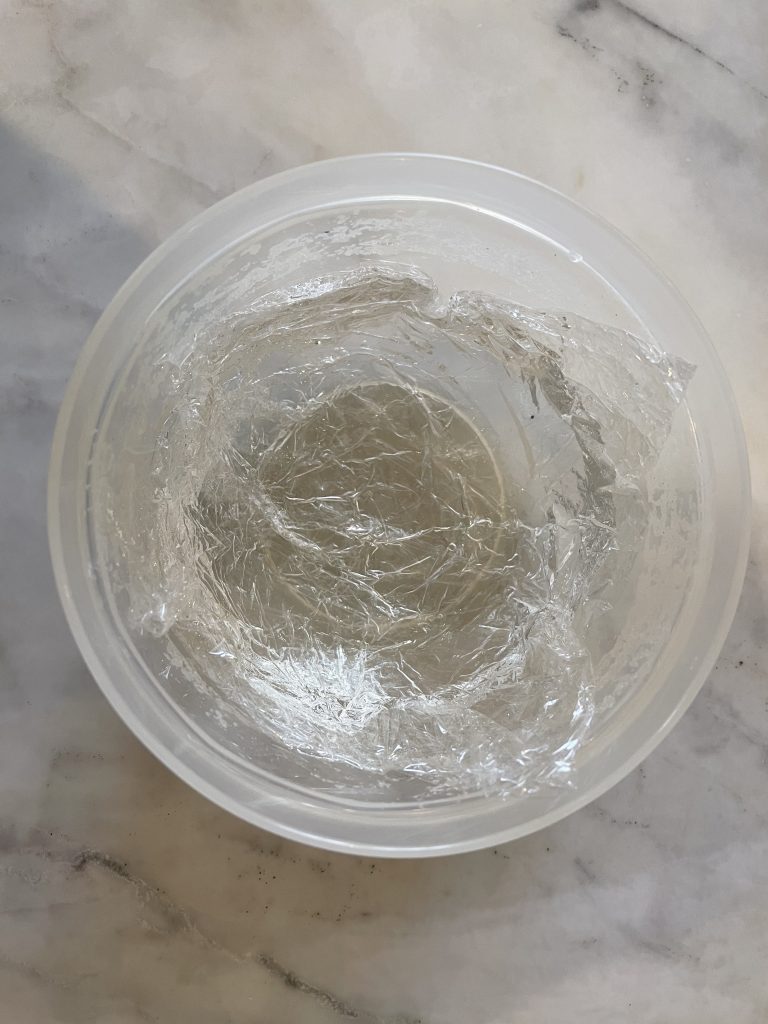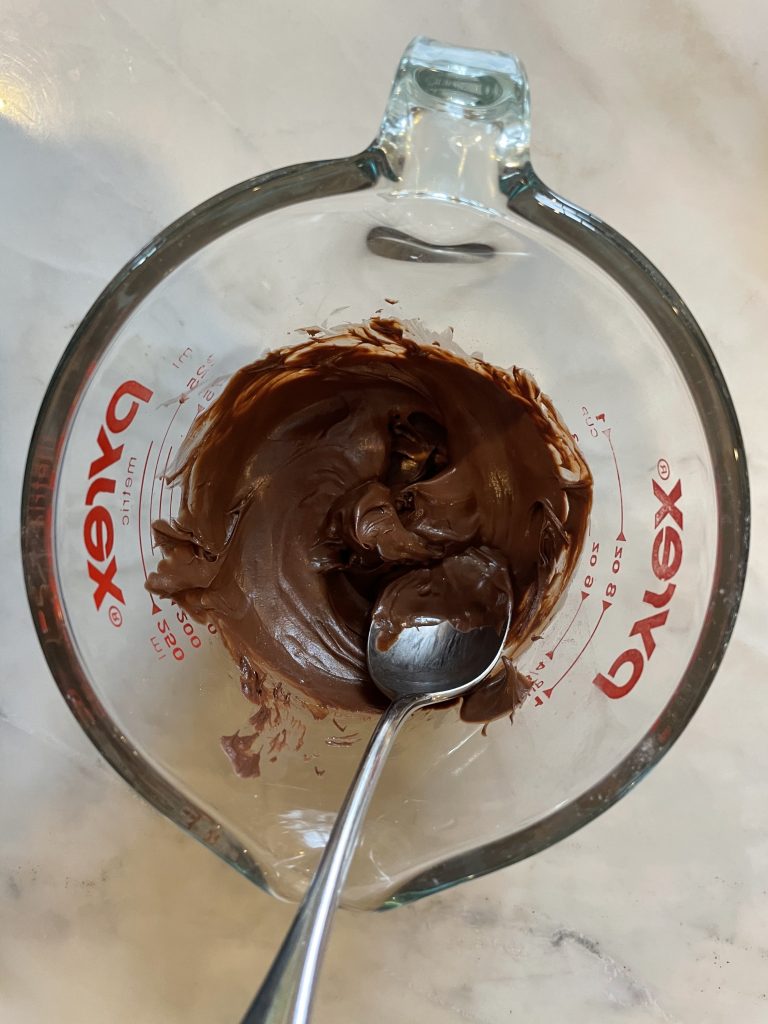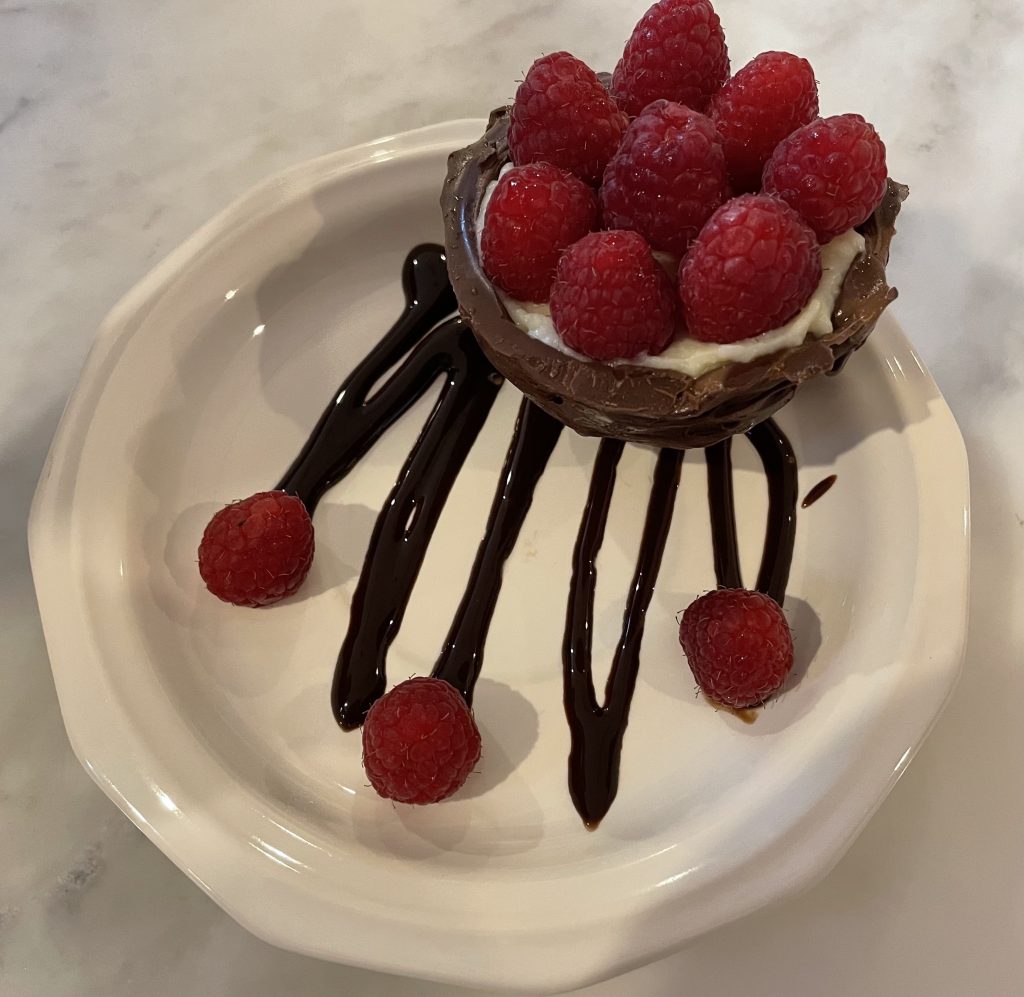I love chocolate! I’ve seen many people make bowls out of chocolate for their desserts, and I have tried so many different ways to replicate making these bowls. From popping balloons to using molds, nothing seemed to work. Finally, I found an easy way to make a chocolate bowl. Even better, it involves science! Chocolate bowls are so versatile and you can incorporate them into almost any dessert. Let’s get started!
What you need:
- A circular container
- Plastic wrap
- Water
- Chocolate chips

Steps:
- Cover the sides of the circular container with plastic wrap.

- Pour the water into the container.

- Freeze the water.
- Microwave the chocolate chips in 15 second increments, stirring the chocolate with a spoon between each.

- Once the chocolate is completely melted, remove from the microwave.
- Take the ice cube out of the freezer and remove it from its container using the sides of the plastic wrap.
- Place it face down on a plate.

- Spread the melted chocolate around the ice cube.

- Allow the chocolate to solidify while the ice cube melts. If the ice begins to melt too quickly and the chocolate has not solidified, put it in the freezer for a few minutes.
- Once the ice cube has completely melted, take the chocolate bowl off of the ice cube.

- You now have a chocolate bowl!

- Fill the chocolate bowl with any toppings you like. I choose pastry cream and fruit, but there are many options!

So, how does making a chocolate bowl involve science?
When you initially have the chocolate chips, they are solid. This means the chocolate particles are moving very slowly and the chocolate maintains its shape. When you put the chocolate chips in the microwave, they begin to melt. This is because the microwave transfers heat to the chocolate chips, giving the chocolate chips more energy. This energy causes the chocolate particles to move at a faster speed, and we perceive this as the chocolate melting. When the liquid chocolate is then poured over the ice cube, the ice cube begins to melt. This is because the heat, or energy, from the chocolate is being transferred to the ice cube, and the particles of water begin to move faster and the ice becomes liquid water. Since the chocolate is losing energy when it is transferring the heat to the ice cube, the chocolate particles begin to slow down. Eventually, after enough energy has left the chocolate and is transferred to the ice cube, a solid chocolate bowl and liquid water is left.

Leila
I’m not sure how I missed this post before, but I am in love with this idea! Chocolate is my favorite dessert. Thank you! My kids are going to love learning these science facts while mom gets to enjoy the fruits of their labor! 😉